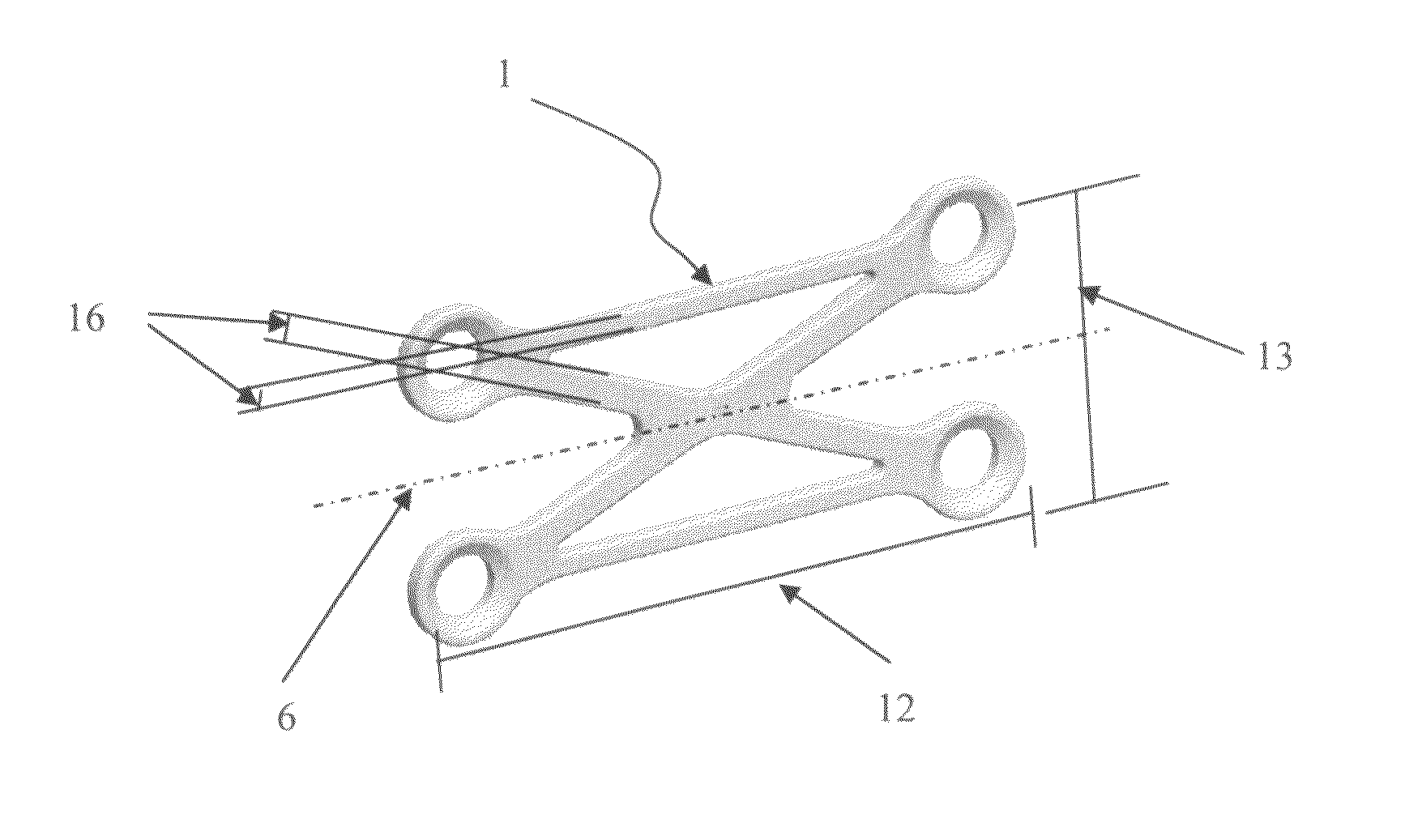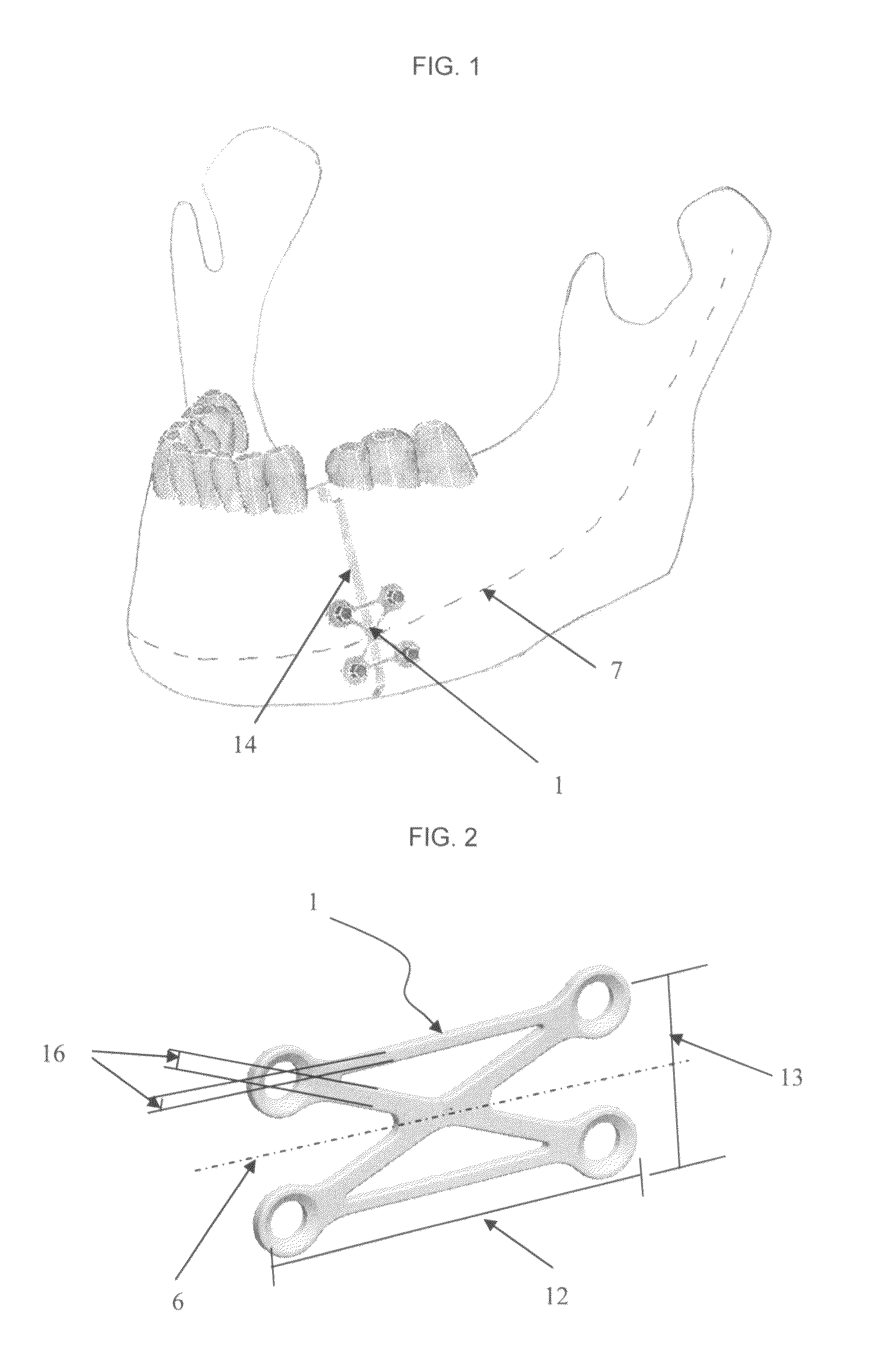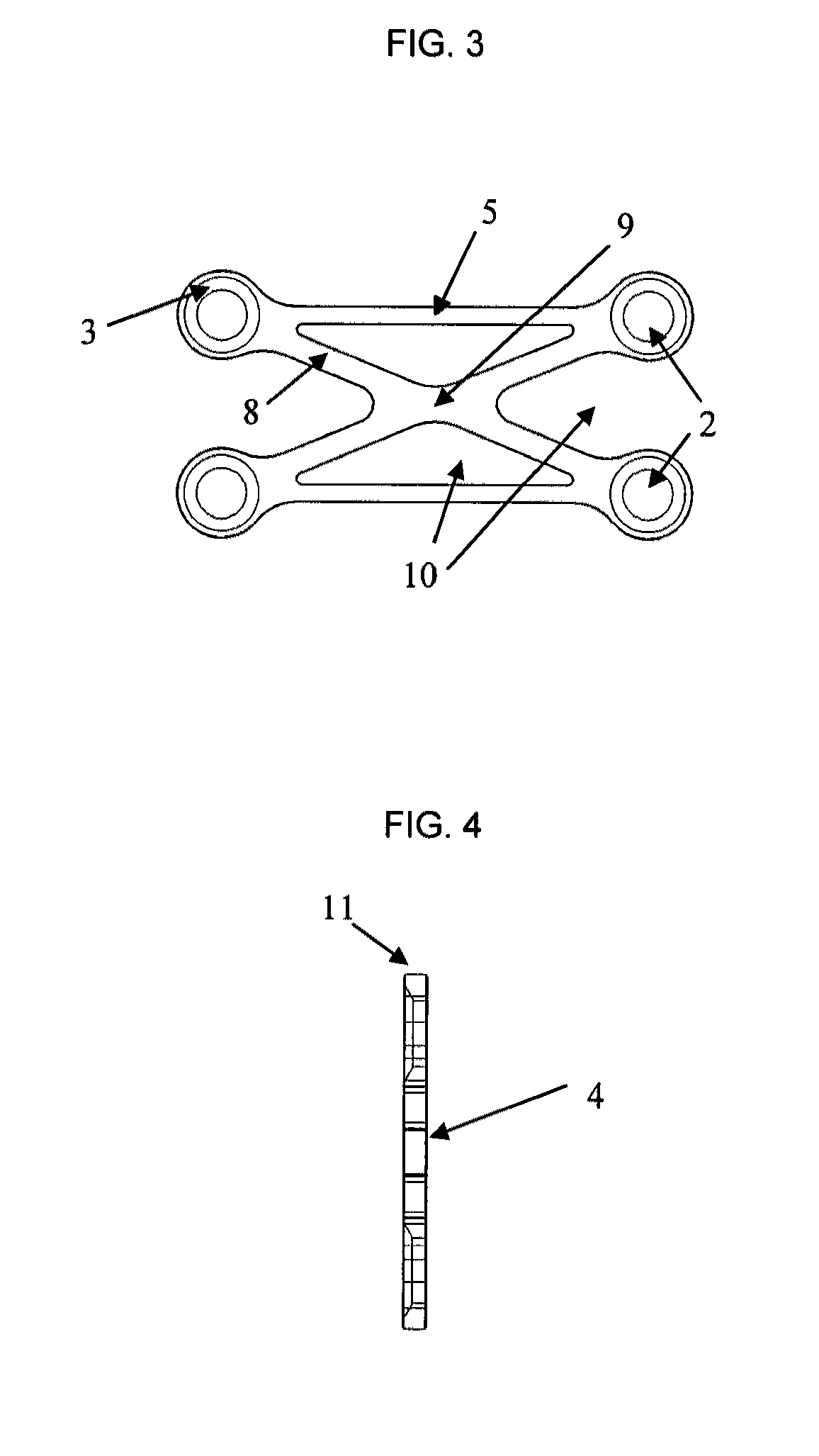Osteosynthesis plate, method of customizing same, and method for installing same
a technology of osteosynthesis plate and customizing plate, which is applied in the field of plates, can solve the problems of limited material number, plate palpability, and limit the size and shape of plates, and achieve the effect of adequate functioning and minimal intrusion on the patien
- Summary
- Abstract
- Description
- Claims
- Application Information
AI Technical Summary
Benefits of technology
Problems solved by technology
Method used
Image
Examples
Embodiment Construction
[0029]The present invention describes an implant for osteosynthesis, a method for installing same, a method for designing same, and a method for customizing same. The present invention may be specifically appropriate for designing, customizing, and installing plates for cranio maxillofacial surgery, though the invention is applicable to other types of surgery. References to fixation of fractures of the mandible, midface, and upper face are exemplary only.
[0030]FIG. 1 shows a fracture 14 of the mandible fixated with an osteosynthesis plate 1. Mandibular fractures 14 can be located in different regions and can vary significantly in their severity. Rigid fixation of a fracture can be achieved by removing tissue to expose a bone fracture, bridging the fracture with an osteosynthesis plate, and securing the fixation plate to the patient anatomy by means of screws, pins, or tines. The purpose of rigid fixation of fractures is to provide adequate stability of the fracture so that a patient...
PUM
 Login to View More
Login to View More Abstract
Description
Claims
Application Information
 Login to View More
Login to View More - R&D
- Intellectual Property
- Life Sciences
- Materials
- Tech Scout
- Unparalleled Data Quality
- Higher Quality Content
- 60% Fewer Hallucinations
Browse by: Latest US Patents, China's latest patents, Technical Efficacy Thesaurus, Application Domain, Technology Topic, Popular Technical Reports.
© 2025 PatSnap. All rights reserved.Legal|Privacy policy|Modern Slavery Act Transparency Statement|Sitemap|About US| Contact US: help@patsnap.com



